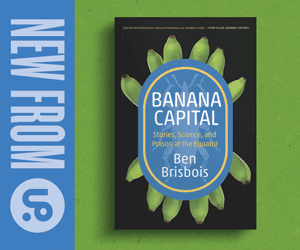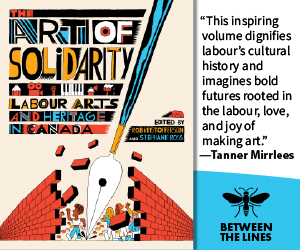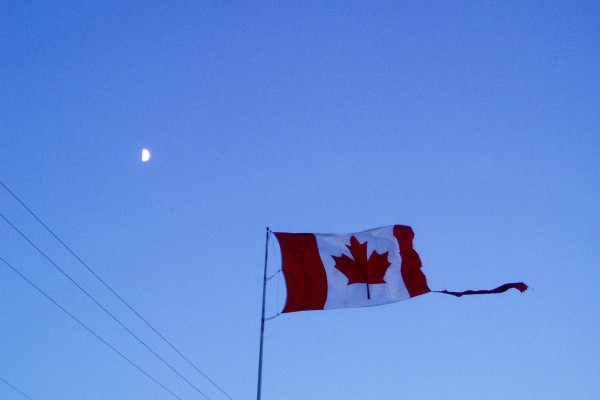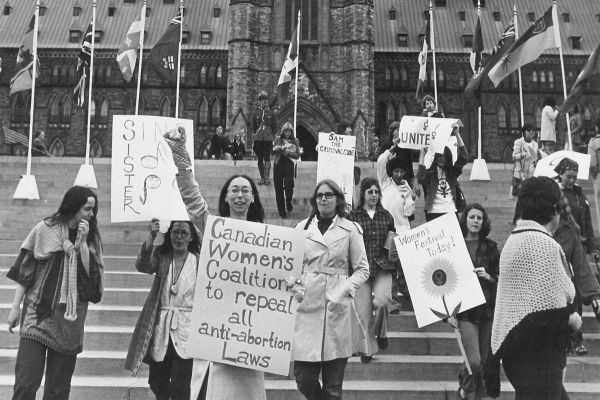The security state’s double standards
As far as Canada’s security state is concerned, not all disruptive protests are created equal

Members of the so-called ‘Trucker Convoy’ drive towards the Alberta legislature from Acheson, just west of Edmonton. Photo by Naomi McKinney/Unsplash.
The institutions of law enforcement and security in Canada are often involved in monitoring and overseeing protest activities. When these go beyond the ‘family friendly’ format and adopt tactics deemed disruptive, the defenders of public order will be expected to determine how best to deal with them.
It is instructive to compare the response of the Ottawa Police to the far-right ‘Freedom Convoy’ with the approach of the Canadian Security and Intelligence Service (CSIS) to Indigenous rail blockades. In a nutshell, the cops in Ottawa took a warm and fuzzy attitude towards the far-right and its thuggish tactics while CSIS looked for ways to treat acts of Indigenous resistance as terrorism. This glaring double standard raises several important questions and the two cases are worth looking at in a little more detail.
Selective policing
Evidence put before the Public Order Emergency Commission shows that the Ottawa cops sympathized with the far-right protestors. A January 25 intelligence report on the Freedom Convoy written by Police Sergeant Chris Kiez described it as a “spontaneous grassroots protest” that was part of an inspiring movement against “globally concerning COVID-19 restrictions.”
The well-documented links between key convoy organizers and white supremacist and far-right groups wasn’t a matter to which Kiez, in his role as intelligence gatherer, paid any particular attention. He preferred to compare what he saw as the noble and ‘spontaneous’ behaviour of convoy participants to the supposedly cynical and manipulative tactics of those protesters who “glue themselves to something, waiting for the same old supper hour news shows and write-ups in hard-left handbills, blogs and undernourished Twitter feeds.”
Taking this comparison further, Kiez’s report paints convoy supporters as a “silent majority,” while left-wing demonstrations, in his view, are run by “professional activists.” Rather chillingly, the report singles out a critic of the police in Ottawa, Sam Hersh, for derisive treatment. As Hersh observed, “It’s very disturbing but not surprising to see that the Ottawa Police are targeting specific individuals for their activism around police accountability.”
Wow.
— Luke LeBrun (@_llebrun) October 25, 2022
On Jan 25, Ottawa Police intelligence wrote:
“The protests globally are made up almost entirely of middle-class members of society. Since the so-called ‘silent majority’ is numerically much larger than the professional activists, such as local Sam Hersch can order up” pic.twitter.com/VINRmrrLnX
The glaring bias that shaped this report is beyond dispute but, from the avowed standpoint of providing a threat assessment that would inform police deployment and tactics in responding to a major protest, it is an entirely worthless document. That police might need to take action to control or contain the activities of convoy participants isn’t a consideration. It is written as a paean and a political endorsement, drawing many ideas and conclusions from the writings of right-wing columnist Rex Murphy.
The mutual admiration society that existed between the far-right convoy participants and the police in Ottawa goes much deeper than the tender feelings of Sergeant Kiez. It is quite beyond dispute that evidence of a hugely disruptive action was disregarded; the convoy was allowed into the centre of the city and permitted to remain until the federal authorities belatedly and reluctantly concluded that a clearing operation could no longer be avoided.
At every turn, the kind of outlook reflected in Kiez’s report was evident in the day-to-day dealings between cops and convoy. Far from the threatening and restrictive posture that the police adopt with most protesters, in the case of the convoy, as Jeffrey Monaghan, associate professor at Carleton University’s Institute for Criminology and Criminal Justice, told Al Jazeera: “[T]here was kind of a deliberate structure to the narrative that this was a legitimate protest—even though there’s all kinds of evidence that it was going to be a complete shit-show beforehand.”
This isn’t reducible to any supposed failure of intelligence and the cops in Ottawa weren’t caught off guard. Monaghan suggested that they treated the convoy with kid gloves because, when it comes to the far-right forces that set it in motion, “they share sympathies, and they share similar cultural and political values.” Though this is entirely true, it is the function of the police, more than the opinions of individual officers, which drives support for the far-right and a corresponding hostility to any actual challenge to the social order that the police serve and protect.
It seems, however, that not all disruptive protests are created equal as far as Canada’s security state is concerned. We now learn that CSIS undertook a careful analysis of the Criminal Code to determine “whether First Nations land rights activists who disrupt trains should be classed as a ‘terrorist threat’ to national security alongside the likes of Al-Qaeda and ISIS.” The security agency shared its analyses with government officials during an unclassified counter-terror briefing in March 2021.
The Integrated Terrorism Assessment Centre (ITAC) concluded that “Although these disruptive actions are damaging to the economy and to rail network operations, they have not yet amounted to acts of terrorism.” In the end, CSIS had to settle, reluctantly, for the conclusion that those defending Indigenous rights and acting against environmental degradation are not full blown terrorists but merely “ideologically motivated violent extremists.” However, the assumptions on display here couldn’t be more obvious or the double standard more glaring.
If a group of far-right organizers wishes to challenge public health measures and engage in highly disruptive forms of protest, police intelligence reports will heap praise upon them. On the other hand, those who get in the way of fossil fuel companies and other powerful interests, will be compared to “the likes of Al-Qaeda and ISIS.”
Police and protests
Several conclusions should be drawn from these two disparate examples of how protests are policed in Canada. The first is that we should be very cautious indeed when it comes to calling for police intervention and criminal sanctions against protest activity, even when the protests are conducted by reprehensible right-wing organizations. We need to remember that the state will act against the right with reluctance while those who actually challenge the injustices of this society will always be the preferred targets of repression. We need to be careful what we ask for in this regard.
Second, it should be stressed and clearly understood that we are dealing with more than the biases of individual cops or a right-wing police culture. The institutions of enforcement serve and protect capitalist interests and this shapes their conduct fundamentally. They will always take the side of employers against workers, oil companies over environmentalists and resource extraction over the rights of Indigenous land defenders. Any illusions here can lead to dangerous miscalculations.
Third, workers and communities should act independently, as far as possible, to contain the growth of the far-right. Rather than call on the police to do their job or ask governments to invoke special powers, we should mobilize against the right and build a movement that can render it irrelevant.
Finally, we should be fully aware of the dangers created by the reigning social instability. The so-called Freedom Convoy was the voice of reactionary rage amplified by the pandemic. The current cost-of-living crisis threatens to produce even more dangerous political manifestations.
As this unfolds, the divergent state responses to protest that we saw in the two cases discussed above will continue to play out. The police and other enforcement agencies can be counted on to open doors for the right while reserving the lion’s share of their repressive zeal for those who struggle for a just society.
John Clarke is a writer and retired organizer for the Ontario Coalition Against Poverty (OCAP). Follow his tweets at @JohnOCAP and blog at johnclarkeblog.com.










